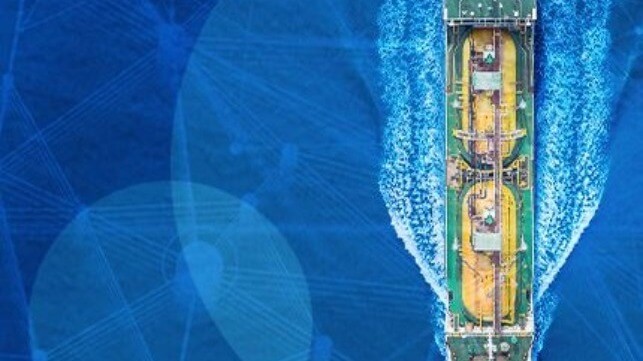Developing Onboard Carbon Capture and Storage for the Maritime Industry

 Technology to enable the reduction of emissions from ships is emerging with support from class, writes Hamid Daiyan, Sustainability Manager, ABS.
Technology to enable the reduction of emissions from ships is emerging with support from class, writes Hamid Daiyan, Sustainability Manager, ABS.
The potential of onboard carbon capture and storage (CCS) to reduce emissions from shipping is subject to ever-growing interest from the shipping industry. As vessel operators seek to comply with current and future regulations and achieve long-term climate goals, carbon capture promises to play a key role.
One of the key drivers to this is the presently limited availability of low-carbon fuels, which is pushing the industry to consider all options for lower emissions beyond energy efficiency measures.
Regulation continues to shape the process. Recent International Maritime Organization (IMO) meetings have considered submissions on this topic and an Intercessional Working Group (IWG) has been established to consider these proposals.
ABS is currently working with vendors and shipowners to understand how this emerging technology can be adapted and absorbed into the maritime industry, its implications for vessel design and operations and its likely impact on carbon emission reduction.
Technology
Existing CCS technologies are largely employed in shore-based applications. These technology platforms need to be marinised for shipboard application and in such a way that balances effective performance against capex and opex and additional fuel consumption.
Onboard CCS reduces greenhouse gas emissions from ships by capturing and storing the carbon dioxide produced onboard. This can be done either before or after the combustion process, using different methods and the captured carbon can be stored onboard in different ways, depending on the technology used.
Two potential onboard carbon storage methodologies are:
Liquefaction: The CO2 is compressed and cooled to form a liquid, which can be stored in tanks or cylinders onboard and can be transferred to shore facilities or other vessels.
Mineralization: CO2 is reacted with minerals to form solid carbonates, which can be stored in containers.
Supply Chain
The evolution of the carbon value chain to include carbon capture and storage onboard ship – as well as its transport at scale for sequestration – will have a large and sustained impact on the shipping industry’s stakeholders, including ports, bunker suppliers and fuel producers.
The capture of carbon dioxide from the vessel propulsion system will require a storage arrangement that can be connected to port facilities for ‘de-bunkering’ or transfer of the captured carbon to portside storage.
This may include direct connections at the berth or could feature the development of a new class of small, dedicated vessels similar to today’s bunker fleet built to handle the shipping of liquefied CO2 to storage or processing facilities.
What is not clear is which ports or marine locations will become centers for carbon storage and how they will manage this process. Ports will need to be intimately involved in the development of the supply chain as they could be the site both of storage and fuel production from LCO2.
Other factors that vessel operators need to consider are that vessels with CCS onboard may need to have offtake agreements in place for the LCO2, including facility certification and a legal framework covering the transfer of responsibilities.
Application Challenges
There are several challenges associated with onboard CCS, which include the high cost and complexity of the value chain which involves multiple actors and stages such as capture, storage, transport, injection, and monitoring of CO2. Each stage has its own technical, operational, and safety requirements that require attention.
The value chain that will handle and store ever larger volumes of carbon is still in the development phase; large-scale storage and processing capacity will be required. For onboard CCS to scale sufficiently, the shipping industry will need to collaborate with other stakeholders in order to establish the required infrastructure and agreements.
Stronger regulation is needed to create a long-term pathway against which owners can invest. Additionally, the public's perception and acceptance of CCS are influenced by their awareness and understanding of the benefits and risks of the technology.
ABS Activities
ABS has been working with global shipping organizations on joint development projects (JDPs) to showcase the safety and feasibility of using onboard CCS. We take a technology-neutral approach - working with vendors and stakeholders across the supply chain to provide Approvals in Principle and New Technology Qualifications to validate concepts and encourage full-scale pilots. We expect the first systems to be potentially available next year.
Additionally, ABS is collaborating with universities and research institutes to explore the potential of various carbon capture technologies for marine and offshore applications. ABS is dedicated to supporting the decarbonization of the shipping industry and advancing the development of onboard carbon capture as one of the potential solutions.
ABS has established a set of guidelines to direct the maritime industry on how to apply carbon capture technology. These guidelines also comprise an optional ‘CCS-Ready’ notation for vessels, based on their level of preparation or readiness for future installations.
The Future
The 81st meeting of the Marine Environment Protection Committee next March will see the topic of carbon capture for shipping on the agenda, with debate likely on the application of systems in retrofits to existing vessels.
The deliberations of the IWG should be considered during this meeting and by this stage it is possible that results from full-scale industry projects will also be available as a commentary on the regulatory development process.
As noted, though the technology is still in development for maritime applications, the demand from shipping for applicable and certified systems means that widespread adoption is possible by 2030.
This adoption path assumes that the storage and processing ecosystem expands at a similar rate. Both these milestones depend on the speed of regulatory development. To achieve the IMO’s stated aim of net zero carbon emissions by 2050, uptake of onboard carbon capture technology will need to be consistent, with rules governing its application in place to drive rapid adoption.
Hamid Daiyan is the Sustainability Manager at ABS.
The opinions expressed herein are the author's and not necessarily those of The Maritime Executive.
No comments:
Post a Comment